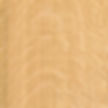Understanding the Different Types of Wood Cuts for Custom Cabinetry & Built-Ins
- Corrine Lombardo
- 3 hours ago
- 3 min read
When you’re investing in custom cabinetry or built-ins, the way lumber is cut from the log shapes everything—grain, stability, cost, and long-term performance. Here’s a clear guide to the four core cuts you’ll hear us recommend at Raleigh Woodworks—plus a few specialty options.
Plain Sawn (Flat Sawn)

How it’s cut: Boards are sliced straight through the log, tangent to the growth rings.
Look: Classic “cathedral” or flame-like grain.
Pros: Highest yield, most affordable, widely available.
Cons: More seasonal movement; more prone to cupping.
Best for: Budget-friendly cabinetry, shelving, trim accents, furniture.
Quarter Sawn

How it’s cut: Logs are quartered first, then sawn 60–90° to the rings.
Look: Linear grain; in white oak, beautiful ray fleck (that shimmering, ribbon effect).
Pros: Greater stability; resists cupping and twisting; distinctive figure.
Cons: More waste → higher cost.
Best for: Craftsman/mission styles, statement cabinetry, furniture, and flooring.
Rift Sawn

How it’s cut: Sawn 30–60° to the rings—often taken from the edges of quartered logs.
Look: Very straight, uniform grain (no cathedrals, no big flecks).
Pros: Excellent dimensional stability; ultra-consistent look.
Cons: Lowest yield → premium pricing.
Best for: Table/chair legs, modern flat-front cabinetry, architectural millwork.
Live Sawn (European Style / Through Sawn)

How it’s cut: The log is sliced straight through without rotating.
Look: A single wide board shows cathedrals, straight grain, and flecking in one piece.
Pros: Efficient use of the log; wide planks; tons of character.
Cons: Visual variation from board to board.
Best for: Wide-plank floors, rustic cabinetry, furniture with a “whole-tree” story.
Specialty Cuts You Might See
Rotary-Cut Veneer: Peeled like paper; bold, irregular grain. Common on plywood faces.
Half-Round Veneer: Closer to flat-sawn appearance with better control than rotary.
Bastard Sawn (Off-Quarter): Between plain and quarter; some linear grain + soft cathedrals.
Flitch-Sawn Sets: Sequential slices kept together—perfect for bookmatched doors or panels.
Rift & Quartered Mix: Popular for flooring; sold together for stability and a refined look.
Which Wood Cut Should You Choose?
Think of it as a balance of look vs. stability vs. budget:
Most stable: Rift → Quarter → Live → Plain
Most economical: Plain → Live → Quarter → Rift
Clean/modern look: Rift
Iconic “Craftsman” fleck (esp. White Oak): Quarter
Classic cathedrals: Plain
Rustic, whole-tree vibe: Live
At Raleigh Woodworks, we’ll help you match cut + species to your style and daily use. For example:
Quarter sawn white oak for timeless, durable kitchen cabinetry.
Rift sawn maple for sleek, contemporary built-ins with consistent grain.
Plain sawn walnut when you want warm color and expressive cathedrals.
Live sawn white oak for statement islands or hutches with organic character.
FAQs
What’s the difference between rift sawn and quarter sawn?
Both are more stable than plain sawn. Quarter sawn shows “ray fleck” in woods like white oak, while rift sawn keeps the grain ultra-straight and uniform without flecking—ideal for modern lines.
Is quarter sawn worth the upcharge?
If you value stability, tighter grain, and the ray-fleck look (especially in white oak), yes. It also helps doors, panels, and long runs stay flatter over time.
Which cut is best for modern flat-front cabinets?
Rift sawn is the top pick for consistent grain and clean lines; quarter sawn is a strong second with a bit more visual interest.
What’s “rift & quartered” flooring?
A blend of rift and quarter-sawn boards—gives you stability and a refined, straight-grain look with some fleck in the mix.
Raleigh Homeowners & Designers: Let’s Plan Your Project
Whether you love the quiet sophistication of rift sawn or the time-honored character of quarter sawn white oak, our team will guide you to the right balance of beauty, durability, and budget.
Ready to get started? Book a consultation and we’ll build something you’ll love for decades.

